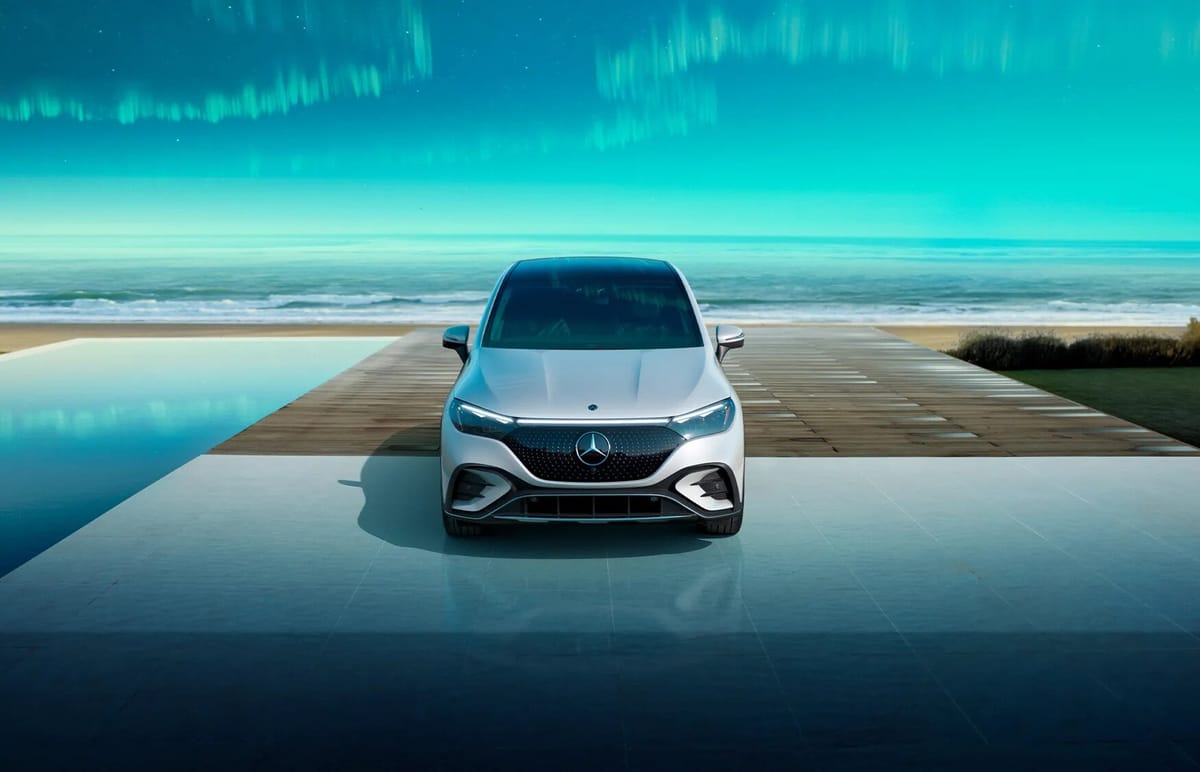Table Of Contents
Understanding Mercedes-Benz EQE SUV Lease Offers
Financial Aspects of Leasing a Mercedes-Benz EQE SUV
Lease Terms and Conditions for the EQE SUV
Preparing for Lease End
FAQ
Navigating the intricacies of leasing a luxury electric SUV like the Mercedes-Benz EQE can be both exciting and daunting. This guide aims to demystify the process, covering everything from understanding special lease offers to preparing for the end of your lease term. Whether you're a seasoned lessee or considering your first luxury electric vehicle, this comprehensive overview will equip you with the knowledge needed to make an informed decision.
TLDR
- Overview and special offers for leasing a Mercedes-Benz EQE SUV.
- Key financial aspects, including payment breakdown and end-of-lease obligations.
- Important lease terms, such as mileage limits and insurance requirements.
- Guidance on preparing for the end of your lease and exploring your options.
Enhancing Lease Strategies Through Flow and Sustainable Development
When considering the leasing of a luxury electric SUV like the Mercedes-Benz EQE, integrating the psychological concept of "flow" and the principles of sustainable development can significantly enhance the leasing experience and contribute to broader objectives.
The concept of "flow," as described by positivepsychology.com, emphasizes a state where individuals are fully immersed and engaged in activities, leading to increased happiness and productivity. For lessees, achieving a state of flow can be facilitated by setting clear goals, such as understanding the financial aspects of the lease and preparing for its end. This heightened focus and enjoyment can transform the leasing process from a mere transaction to a fulfilling journey, enhancing satisfaction and decision-making.
"By understanding and integrating the concept of flow into strategies, individuals may be able to enhance their effectiveness by promoting deep engagement with tasks and increasing feelings of reward and satisfaction." - NCBI
Moreover, applying the principles of sustainable development, as outlined by Enel.com, ensures that leasing a luxury electric vehicle aligns with broader environmental goals. By choosing electric vehicles, lessees contribute to reducing carbon emissions and promoting renewable energy sources. This approach not only addresses the lessee's immediate needs but also supports global sustainability efforts, including conserving biodiversity and fostering community resilience.
- Key Takeaways:
- Achieving a state of flow enhances the leasing experience through increased engagement and satisfaction.
- Leasing electric vehicles contributes to sustainable development goals, such as reducing carbon emissions and promoting renewable energy.
By intertwining the psychological benefits of flow with the environmental benefits of sustainable development, lessees can enjoy a more rewarding leasing process while contributing to the well-being of the planet. This holistic approach to leasing luxury electric SUVs like the Mercedes-Benz EQE offers a unique and impactful way to navigate the intricacies of the leasing process.
FAQ
What is the main topic of the article?
The article primarily focuses on the latest advancements in renewable energy technologies and their impact on global energy systems.
How do renewable energy technologies benefit the environment?
Renewable energy technologies significantly benefit the environment by reducing greenhouse gas emissions, decreasing air pollution, and minimizing the dependence on fossil fuels, thus contributing to a healthier and more sustainable planet.
What are some examples of renewable energy sources mentioned in the article?
The article mentions several renewable energy sources, including solar power, wind energy, hydroelectric power, and geothermal energy, highlighting their roles in the transition towards a cleaner energy future.
Can renewable energy sources fully replace fossil fuels?
According to the article, while renewable energy sources have the potential to significantly reduce the reliance on fossil fuels, a complete replacement requires advancements in technology, increased investment, and supportive policies to overcome current limitations such as energy storage and grid infrastructure.
What challenges are associated with the adoption of renewable energy technologies?
The article outlines several challenges, including the high initial costs, the need for technological advancements, the variability of renewable energy sources, and the requirement for substantial changes in energy infrastructure and policy frameworks.
How is the global community responding to the need for renewable energy?
The global community is increasingly recognizing the importance of renewable energy, with many countries investing in research and development, implementing supportive policies, and setting ambitious targets for renewable energy adoption to combat climate change and promote sustainability.
What role does innovation play in the advancement of renewable energy technologies?
Innovation is crucial for improving the efficiency, affordability, and scalability of renewable energy technologies. The article emphasizes that ongoing research and development efforts are key to overcoming existing barriers and unlocking the full potential of renewable energy.
Are there any economic benefits to transitioning to renewable energy?
Yes, the transition to renewable energy not only has environmental benefits but also offers economic advantages, such as creating new jobs in the renewable energy sector, reducing energy costs in the long term, and decreasing the economic risks associated with fossil fuel price volatility.
What future prospects does the article suggest for renewable energy?
The article is optimistic about the future of renewable energy, suggesting that with continued innovation, supportive policies, and increased investment, renewable energy can play a dominant role in the global energy mix, leading to a more sustainable and resilient energy system.



